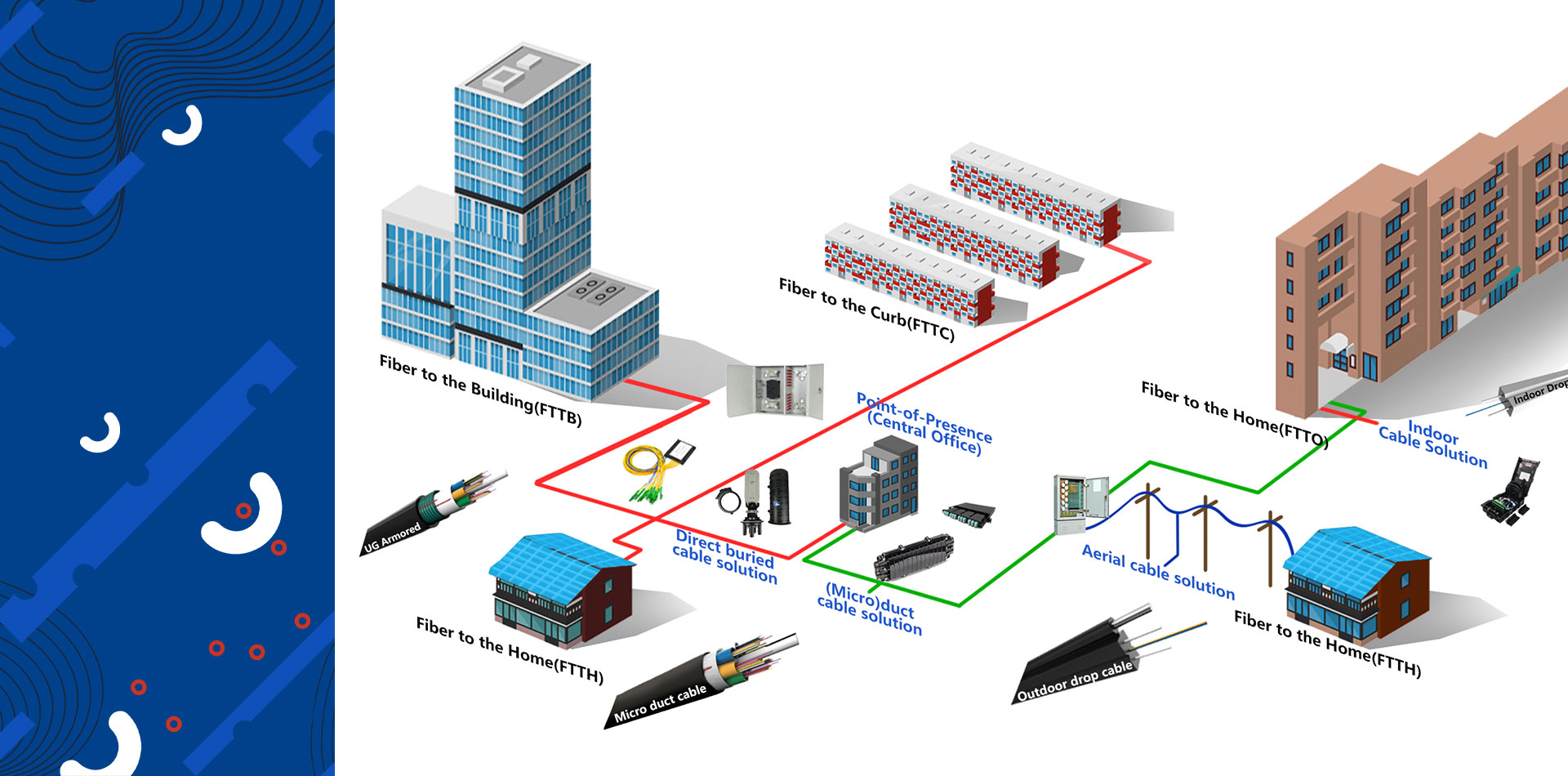The maximum distance for a fiber optic cable depends on several factors, including the type of fiber used, the data transmission speed, the quality of the equipment, and whether or not amplification or regeneration is used. Here’s a breakdown of key considerations for both single-mode and multimode fiber optics:
Single-Mode Fiber: Can typically reach 40-80 km without amplification and 1000 km+ with amplifiers for high-speed, long-distance connections.
Multimode Fiber: Usually supports up to 2 km for 1 Gbps and less than 500 meters for higher speeds (10 Gbps or more).
1. Single-Mode Fiber (SMF):
Single-mode fiber is designed for long-distance communication, as it allows light to travel in a single mode or path. This minimizes signal loss and allows signals to travel farther without degradation.
Typical Maximum Distance:
Without amplification: Single-mode fiber can transmit data up to 40-80 kilometers (25-50 miles) for standard communication at speeds of 1 Gbps or 10 Gbps.
With amplifiers or regeneration: Using optical amplifiers (such as erbium-doped fiber amplifiers, or EDFAs) or regenerators, the distance can be extended much farther. For example, at high data rates (such as 100 Gbps or more), it can reach 100 km or more, and with additional amplifiers or regenerators, it can go up to 1000 km (620 miles) or even further in long-haul applications.
Real-World Examples:
Undersea cables: Modern submarine fiber optic cables can span thousands of kilometers, often using repeaters to amplify the signal, allowing distances in the thousands of kilometers.
Terrestrial long-haul networks: Optical signals in fiber cables can reach over 1000 km with proper amplifiers in place.
2. Multimode Fiber (MMF):
Multimode fiber uses multiple paths or modes for light to travel, which increases dispersion and can limit the maximum distance compared to single-mode fiber. However, it is well-suited for short to medium distances, such as within buildings, campuses, or data centers.
Typical Maximum Distance:
For 1 Gbps: Multimode fiber can typically support distances of up to 2 kilometers (1.2 miles).
For 10 Gbps: At higher speeds like 10 Gbps, the maximum distance typically reduces to 300 meters (1,000 feet), though some newer multimode fibers (e.g., OM4) can extend this to 400-500 meters (1,300-1,600 feet).
For 40-100 Gbps: At these very high speeds, distances are generally limited to 100-150 meters (330-490 feet) for multimode fiber, even with the latest high-performance cable types (e.g., OM4, OM5).
3. Factors Affecting Distance:
Wavelength: The distance a signal can travel is affected by the wavelength of light used. For example, using a longer wavelength (like 1550 nm for single-mode) typically reduces loss and extends distance.
Signal Loss (Attenuation): Fiber optic cables have a certain amount of signal loss per kilometer, measured in dB/km. This loss increases with distance, and higher bandwidths often result in greater loss.
Dispersion: In multimode fiber, dispersion (the spreading of light pulses over distance) limits the maximum transmission distance at higher speeds.
Data Rate: Higher data rates generally result in more significant signal degradation, reducing the distance a signal can travel without needing amplification or regeneration.
Amplifiers/Repeaters: Using optical amplifiers (in single-mode fiber) or repeaters can help maintain signal strength over long distances, extending the reach significantly.
4. Practical Considerations:
Data Centers and Campus Networks: Multimode fiber (OM3 or OM4) is commonly used for distances up to 300-500 meters for 10 Gbps and higher data rates.
Long-Haul and Undersea Networks: Single-mode fiber, with optical amplifiers, can span thousands of kilometers, as seen in submarine cables, enabling global communication.
Post time: Feb-21-2025

